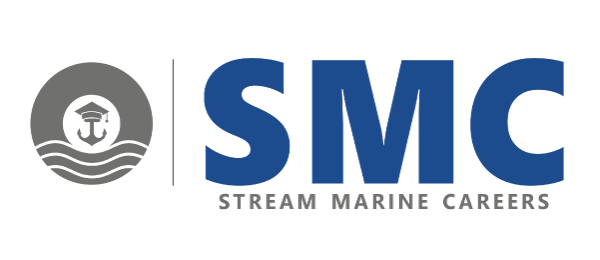At Stream Marine Careers, we are proud to showcase the journeys of our cadets. We recently sat down with Stuart Birchall, one of our current Deck Cadets working with Sølvtrans. Stuart previously served in the Royal Navy on a submarine before transitioning to the merchant navy. Here’s a firsthand look at his experiences and insights.
1. This is your first time at sea as a Deck Cadet but not at sea. How does it compare to being at sea with the Royal Navy?
Stuart: Being at sea on a surface ship is very different from a submarine. For starters, being able to see daylight, the scenery of new places, and the fact I can communicate with my family and kids is always a benefit, as opposed to being stuck inside a tin can for months at a time completely cut off from the outside world.
2. From what you have learned in phase 1, what has been the most relevant subject onboard?
Stuart: Definitely the bridge watchkeeping and navigation simulator course has come in useful as I can now put all that practice and learning into practice in a real-life scenario. I have been getting a lot of navigation and watchkeeping experience over the last few weeks using all the vessel’s equipment to safely navigate around the west coast of Scotland, sometimes in quite busy traffic areas.
3. A wellboat is very different from other vessel types that cadets normally spend their sea time on. Can you tell us more about this vessel type?
Stuart: Wellboats are specialist vessels designed for the handling and treatment of live fish, namely Atlantic Salmon and smolts. They conduct either treatment or harvesting operations. Treatment operations involve operating at offshore fish farms where the fish are loaded into the onboard freshwater tanks (known as wells) and treated for a variety of common fish viruses and diseases. Sometimes this involves adding medicines into the water under the guidance of specialist vets and strict RSPCA guidelines before the fish are returned to the pens.
Harvesting involves loading fully grown fish and transporting them to the shore-based facility for “bleeding” and transport to the processing plants. All these are done under strict guidelines with fish welfare and monitoring at the forefront to ensure the fish are treated and handled in the most humane and safest ways possible.
4. What is a typical day onboard?
Stuart: My typical day is mainly day working from 7 am – 7 pm alongside the master in the morning and then the chief mate in the afternoon. Typically, I am doing navigation on the bridge in the morning while putting my COLREGs learning into practice with the master. In the afternoons, I assist the chief mate not only with navigation but also with administrative tasks at sea. During operations, I’ve been assisting the AB on deck with fish handling, crane work, and mooring operations, which has further developed my skills and experiences.
5. What are you most looking forward to for the rest of your cadetship?
Stuart: I’m mostly looking forward to the end goal of successfully completing my cadetship and gaining my CoC, something I never would have imagined being possible 12 months ago. In the short term, I’m definitely excited about getting back to college to see my classmates again and sharing our experiences. I’m sure there are going to be some belting stories doing the rounds.
Embark on Your Maritime Career with Stream Marine Careers
Stuart’s journey highlights the diverse and rewarding experiences available through a cadetship with Stream Marine Careers. Whether you are transitioning from a different career or starting fresh, the opportunities at sea are vast and fulfilling. If you’re inspired by Stuart’s story and are considering a career in the maritime industry, explore our cadetship programs and take the first step towards a rewarding career at sea.

